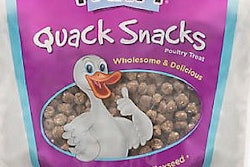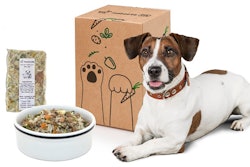
The varieties of dog, cat and other pet food available have diversified from conventional kibble to a range of options, including frozen or refrigerated fresh pet foods. This diversification of pet food options may have implications for calculations used to estimate a particular formulation’s energy and nutrient content.
“There are many ways that we can estimate the calories of a dog food,” Jirayu Tanprasertsuk, Ph.D., scientist with pet food company Nom Nom said. “The one that is commonly used, because it's pretty easy to do, is the modified Atwater calculation. That takes into account mostly the macronutrient composition. But we know that the digestibility of calories or macronutrients are not influenced by only the macronutrient composition. They are influenced by a lot of factors like food processing, the fiber content, etc.”
Tanprasertsuk was part of a group of Nom Nom and University of Florida researchers who conducted an experiment to observe differences in digestibility and available calories among several varieties of dog food. The researchers observed differences not only among the actual foods, but in the estimates provided by calculations of digestibility. The journal Translational Animal Science published the results.
Experiment on fresh pet food and kibble digestibility
Like frozen entrees for humans, pet food companies make these products from fresh meats, vegetables, grains and other ingredients, then freeze or refrigerate them.
In the experiment, normal-weight dogs ate one of five test diets with comparable macronutrient composition for 10 days.
- chicken-based extruded dry kibble diet – 12 dogs
- chicken-based fresh food – 12 dogs
- beef-based fresh food – 6 dogs
- pork-based fresh food – 6 dogs
- turkey-based fresh food – 6 dogs
The 12 dogs fed fresh chicken-based food had lower defecation frequency, lower fecal dry matter and fewer calories left over in the feces than the kibble diet. Likewise, apparent total tract digestibility of protein, fat, dry matter and calories were lower in the kibble diet than any of the fresh diets.
“We need to be cognizant that there's a huge difference between different types of pet food, and that we make sure we're using the correct and most accurate version of those calculations, so that we're then providing the correct amount of calories to the pets,” study co-author Justin Shmalberg, DVM, chief scientific and medical officer with Nom Nom said.
Providing accurate calorie estimates helps pet owners avoid feeding their animals more energy than they need in a day. Improving calculations and subsequently calorie labeling could help fight the growing obesity problem in pets.
“The best method is to measure it, but we know that it's not possible sometimes,” Tanprasertsuk said. “That's why we need improvements for these calculations.”

















